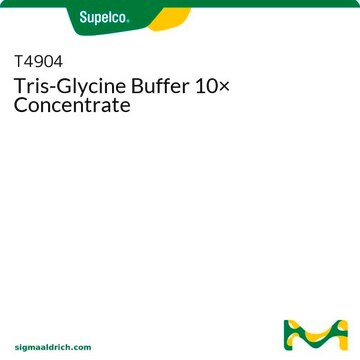S6576
ChIP Next Gen Seq Sepharose™
Synonym(s):
Staph-Seq
Sign Into View Organizational & Contract Pricing
All Photos(1)
About This Item
UNSPSC Code:
23201100
NACRES:
NA.55
Recommended Products
General description
The DNA-blocked “Staph-Seq” cells are ideally suited for studying recruitment of low abundance transcription factors (TF) in genome wide location analysis experiments such as ChIP-chip and ChIP-Seq. Sequencing quality modified Staph A (Staph-Seq) is achieved by employing a proprietary DNA-blocking technology to prevent Staph A DNA contamination of next-generation sequencing data in ChIP-Seq experiments. The high surface-density of endogenous protein A on the cell wall of Staph A serves as an excellent matrix to pull-down rare TF-associated chromatin complexes.
Learn more about ChIP kits and protocol.
Learn more about ChIP kits and protocol.
Legal Information
Sepharose is a trademark of Cytiva
related product
Product No.
Description
Pricing
Storage Class Code
11 - Combustible Solids
WGK
WGK 3
Flash Point(F)
Not applicable
Flash Point(C)
Not applicable
Certificates of Analysis (COA)
Search for Certificates of Analysis (COA) by entering the products Lot/Batch Number. Lot and Batch Numbers can be found on a product’s label following the words ‘Lot’ or ‘Batch’.
Already Own This Product?
Find documentation for the products that you have recently purchased in the Document Library.
Epigenome-wide analysis of DNA methylation in lung tissue shows concordance with blood studies and identifies tobacco smoke-inducible enhancers
Theresa Ryan Stueve
Human Molecular Genetics (2017)
Theresa Ryan Stueve et al.
Human molecular genetics, 26(15), 3014-3027 (2017-09-01)
Smoking-associated DNA hypomethylation has been observed in blood cells and linked to lung cancer risk. However, its cause and mechanistic relationship to lung cancer remain unclear. We studied the association between tobacco smoking and epigenome-wide methylation in non-tumor lung (NTL)
Genetic Framework for GATA Factor Function in Vascular Biology
Linnemann A.K., et al.
Proceedings of the National Academy of Sciences of the USA, 1, 13641-13646 (2011)
Yoon-A Kang et al.
Molecular and cellular biology, 32(1), 226-239 (2011-10-26)
Developmental and homeostatic remodeling of cellular organelles is mediated by a complex process termed autophagy. The cohort of proteins that constitute the autophagy machinery functions in a multistep biochemical pathway. Though components of the autophagy machinery are broadly expressed, autophagy
Our team of scientists has experience in all areas of research including Life Science, Material Science, Chemical Synthesis, Chromatography, Analytical and many others.
Contact Technical Service








